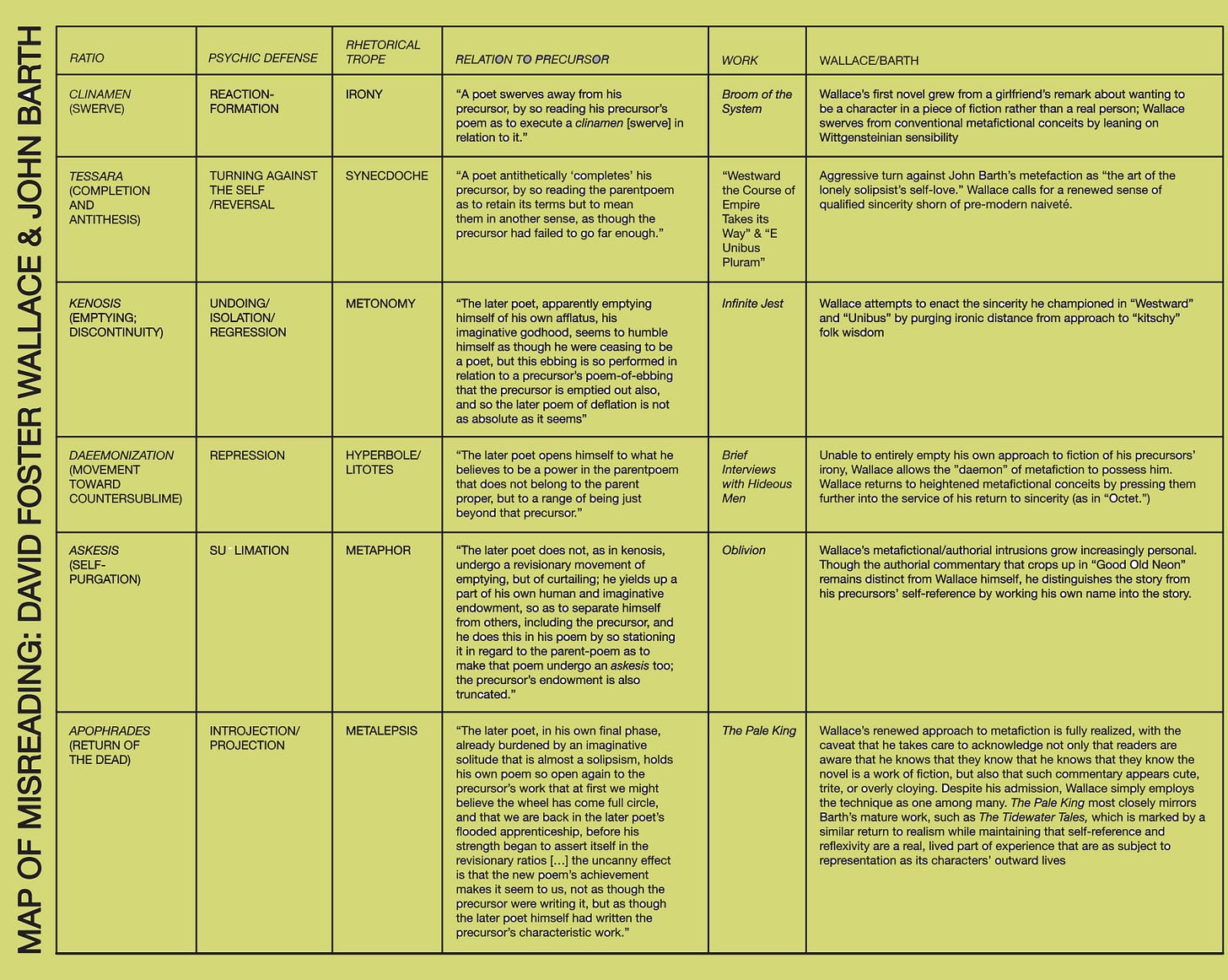I’m back in action after having to sprint through prep for a talk at the International David Foster Wallace’s Soceity’s 2023 Conference along with prepping a forthcoming article for the Journal of Festival Culture Inquiry and Analysis’s special series on Bakhtin for the Twenty-First Century.
Moving into the summer, I’ve finally got some time to dig in on projects that got tabled back in the spring. As a prelude to Dudes Rock series, I have an incel/blackpill piece in the works on Alexander Theroux’s Darconville’s Cat; I’m working on wrapping up a response to photojournalist Michael Christopher Brown’s hellish nightmare artifical intelligence “post-photography” that that likely sent Jean Baudrillard’s poor corpse rolling in its coffin; I’ve also got some preparatory notes loaded up in the hopper on Paul Ricouer’s work on memory alongside Baudrillard’s Americana books.
And! As a quick placeholder, I’m also including an early sketch running David Foster Wallace’s fiction through Harold Bloom’s Map of Misreading.
Bloom’s 1973 Anxiety of Influence outlines six “revisionary ratios” that trace the succession of inter-generational aesthetic influence. Bloom’s formula for development is Oedipal: his “concern is only with strong poets, major figures with the persistence to wrestle with their strong precursors, even to the death.” Starting with a “swerve,” successor poets break with their forerunners and move through a series of progressive stages that eventually reconcile their initial break. Above is a copy of Bloom’s table with additional columns tracking Wallace’s swerve from and eventual reconciliation with his personal precursor, John Barth.


